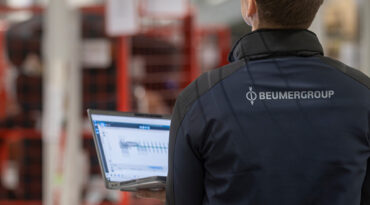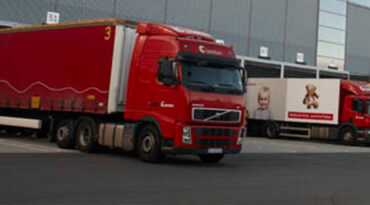And the same can be said about businesses in the Courier Express Parcel (CEP) segment – avoiding AI, and hoping it goes away, simply isn’t an option … because it permeates everything they do.
From optimising its use in haulage – predicting demand and delivery peaks so there is always enough capacity – to fully automating the sortation process, its role in helping to fill the delivery truck for the Final Mile is helping CEP operators to reduce costs, emissions, labour usage and the time of the parcel’s journey, from sender to end-consumer.
Key contributions in the Last Mile
But it is in the Last Mile itself, the most costly part of the parcel’s journey, where it is making the biggest difference.
AI-powered algorithms are already helping to optimise delivery routes and stock local inventories using customer data and real-time information.
And one day soon AI will be entrusted with the logistics of orchestrating an entirely automated delivery system using robots, drones and self-driving vehicles.
So let’s take a look at how Artificial intelligence is shaking up the CEP industry, spread across three sub-segments: haulage, the distribution centres (DCs) and the Last Mile.
Limiting the transport of air in haulage
CEP operators are using AI to reduce their transport of air: the amount of space not taken up by parcels in haulage. This not only decreases the cost, but the environmental impact of each item.
By leveraging data, CEP operators can predict when it might be advantageous to delay deliveries until there is an adequate capacity, along with when there might be peak scenarios and extra capacity will be needed.
For example, delaying Tuesday deliveries until Wednesday might make sense when there are enough parcels to fill the truck.
To leverage the situation, the AI might suggest lowering the price on Monday to attract more customers.
Loose loads that limit the transport of air are far more time-consuming than caged loads to load and unload, but AI-powered machine learning will in the future speed this up by enabling a more automated loading process.
Some automated loading processes are already loading trucks to 70-80 percent of their capacity – which is on par with the utilisation rate of caged loads.
While other operators are closing in on a high utilisation rate with a system that uses same-sized cartons, which can be packed more tightly than loaders playing ‘parcel Tetris’
Digital tools improving sortation in DCs
AI software solutions are increasingly being used in the DCs to improve sortation rates: most notably digital twins and Cloud-based OCR systems.
A digital twin is a digital representation of something that exists in the physical world, like a sortation system, which enables the operator to get a better understanding of how a system functions – in regards to capacity or resources, etc.
The digital twin will enable CEP operators to predict sortation problems before they occur, strategically plan better, test new innovations, and learn from performance and insights.
Meanwhile, the cloud-based OCR is an AI-powered technology that can read as many as 60,000 barcodes an hour, reducing the percentage of undefined barcodes down from 5 to 2 percent of the total.
The Cloud-based tech takes only seconds to work, and beyond a small installation fee, companies only pay for what they use, so it’s a boon for small operators with limited funds to invest.
AI-powered automation is also improving sortation through the employment of robot arms to singulate parcels so they can be read by the scanner – previously a problem that often required manual intervention.


















